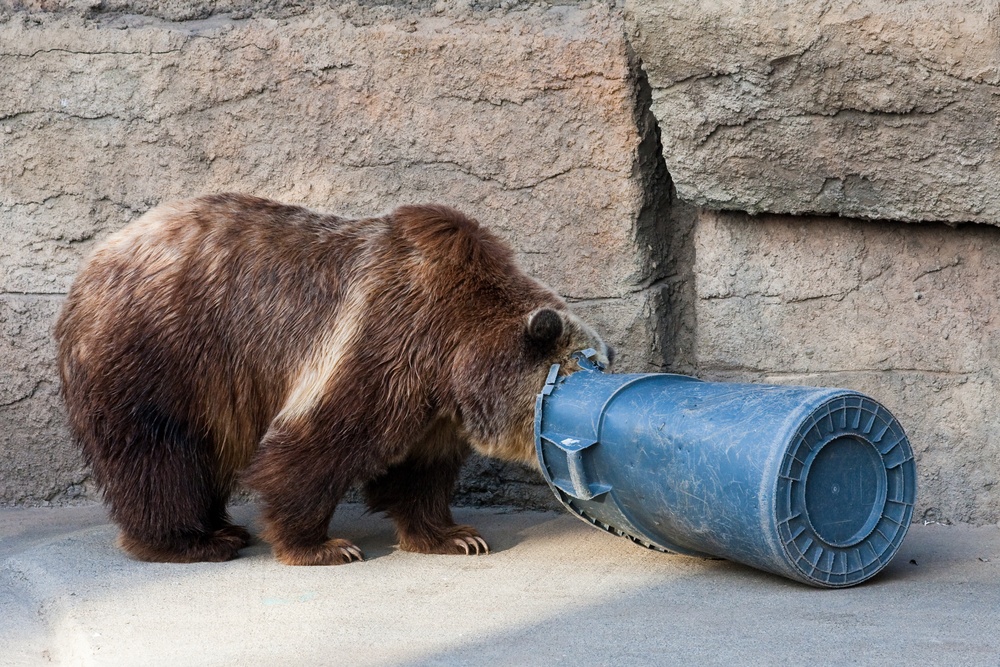As an Amazon Associate I earn from qualifying purchases.
To help you find the best backpacking stove for your next adventure, we put together our top five favorite backpacking stoves. We chose the best overall, and then included stoves that top the charts for being lightweight, ultralight backpacking stoves and the best wood burning backpacking stove as well.
Our Top Picks for Best Backpacking Stoves (Quick Hits)






Last update on 2025-10-18 / Affiliate links / Images from Amazon Product Advertising API
Best Backpacking Stove Buyers Guide
Since we only include five backpacking stoves on our list, we broke down the criteria we used to choose each one. Then, if you don’t find the perfect backpacking stove on our list, you’ll at least be well equipped as you search for one.
Fuel
One of the first things you should decide before choosing a backpacking stove is the type of fuel you’d like to use. The most commonly used fuel types are:
- Wood (biomass) Fuel
- Canister Fuel
- Liquid Fuel
- Solid (Esbit) Fuel
- Alcohol Fuel
There are advantages and disadvantages to each type of fuel on this list. The most commonly used fuel is canister fuel (i.e., propane). They are incredibly versatile and very convenient/easy to use.
The next most commonly used fuel type is liquid fuel (white gas, kerosene, or gasoline). This type of fuel is ideal for cold weather conditions, but they do take more upkeep. More experienced backpackers will use a liquid fuel stove over a canister as they can be complicated to use and clean. Liquid fuel is also more affordable, and the canisters are refillable.
The other three fuel types are more common amongst ultralight backpackers, bushcrafters, and survivalists. Solid (Esbit) fuel is typically a go-to for a survival kit and isn’t necessarily used for frequent backpacking. The other two fuel options, biomass, and alcohol are used more often among backpackers.
Biomass fueled stove doesn’t require you to pack fuel. You collect sticks, leaves, pinecones, etc. that you can burn. These biomass-fueled stoves are affordable and can save you money on fuel. However, they do not necessarily heat as well or consistently, and you also cannot control the simmer level.
The last type of fuel on our list is alcohol (denatured or methyl). What started as a survivalist hack has grown into a backpacking stove favored by lightweight backpackers. Like biomass stoves, it can be difficult to control the heat with this fuel type.
Weight / Packability
The number one thing that contributes to the weight of your stove will be the fuel. After that, you’ll need to factor in the heating mechanism and your pot for cooking.
Many backpacking stoves are designed to pack into your pot. This makes them easier to pack and ensures they are small. Larger stove options, like most liquid fuel stoves, will be bulkier, but they are still packable.
Durability
Many of the lowest-cost backpacking stoves will fail in the durability section. While they will work, they likely won’t work well for long.
It helps to look at recent, verified customer reviews to get a better feel for the durability of a backpacking stove. If a stove is finicky, breaks, or only works well for a certain amount of time you may see that show up in reviews.
When looking for the most durable stove options, it also helps to seek out well-known and trusted brands.
Heating Capabilities
Some backpackers only want a stove that heats water. If that’s the case, stoves like JetBoil are a common go-to. If you are a more particular camp cook, you may want a stove that simmers.
Also, consider the weather conditions the stove will function. The best stove for sub-zero cooking is going to always be a liquid fuel stove. However, if you usually camp in the summer months, this won’t need to be as much of a focus.
Wind protection is related to heating capabilities as well. Having something to block the wind can save you a lot of fuel and can let you stove heat properly. Some stoves have wind protection built-in, but you can also make or buy one to add to your stove.
Other FAQs About Backpacking Stoves
How long does backpacking stove fuel last?
This will depend on the type of fuel you use and how much fuel you bring. Canister stoves will have a set fuel amount between 4-16 ounces. Liquid and alcohol fuel is refillable so that you can bring the amount of fuel necessary for the length of your trip. Biomass fuel is picked up along the way, and Esbit solid fuel cubes only burn for about 12 minutes apiece.
Can I fly with a backpacking stove?
All airlines have different requirements, but in most cases, you can fly with the stove heating mechanism but not the fuel. Contact the airline before bringing a backpacking stove on board.
Are all stove fuel canisters refillable?
Most canister stoves will not have refillable fuel containers. However, alcohol and liquid fuel stoves will almost always use refillable fuel containers. Esbit or solid fuel sources will come in cubes that burn down entirely, and biomass is found along the way.
Top Backpacking Stoves Reviewed
MSR PocketRocket 2 – Best Overall
Last update on 2025-10-18 / Affiliate links / Images from Amazon Product Advertising API
Fuel Type: Canister
Weight: 2.6 oz
Average Boil Time: 3 minutes per liter of water
MSR has long been a trusted brand for backpacking stoves. They have a lot of different options, but for our best overall backpacking stove, the classically simple PocketRocket was our choice. It is simple, durable, and easy to pack.
Pros:
- Lightweight
- Adjustable heating
- Packable
- Quick boil time
- Powerful burner
Cons:
- Non-integrated pot system
- No wind protection
BRS 3000T Ultralight Stove – Best Value
Last update on 2025-10-18 / Affiliate links / Images from Amazon Product Advertising API
Fuel Type: Canister
Weight: 1 oz
Average Boil Time: 4 minutes 43 seconds per liter of water
The BRS 3000T Ultralight Stove is an excellent option for ultralight backpackers that like the design of the MSR PocketRocket but want to save weight. It is a trusted design that is easy to use, but it will not heat quite as fast as other stove types and does not have simmer control.
Pros:
- Lightweight
- Easy to use
- Packable
Cons:
- No simmer control
- Not as durable as similar stove options
MSR WhisperLite Universal – Most Versatile
Last update on 2025-10-18 / Affiliate links / Images from Amazon Product Advertising API
Fuel Type: Liquid
Weight: 11.5 oz
Average Boil Time: 5 minutes per liter of water
For many backpackers, a liquid fuel stove can require a learning curve. You’ll have to pump your fuel to use your stove, and you’ll have to invest time in general upkeep. However, you may be rewarded with long durability with minimal issues. This stove works well in all climates, it comes with a windscreen, and you can adjust the temperature while cooking.
Pros:
- Can heat in sub-zero temperatures
- Durable and long-lasting
- Large cooking surface
- Refillable fuel container
- Relatively compact
Cons:
- Heavy
- Requires more cleaning and upkeep
Solo Stove Light – Best Wood Burning Backpack Stove
Last update on 2025-10-18 / Affiliate links / Images from Amazon Product Advertising API
Fuel Type: Wood/Biomass
Weight: 9 oz
Average Boil Time: 8-10 minutes per liter of water
This stove is great for someone who doesn’t want to take up any space in their backpack with fuel as it uses biomass that you find on the trail for fuel – limbs, twigs, moss, etc. It is lightweight, simple, and small. While the weight is more middle of the road, not having to pack in extra fuel options could save you some space in your pack.
Pros:
- Middle range weight
- Uses easily available biomass for fuel
- Easy to use
- Small and easy to pack
Cons:
- Can take some getting used to when getting it started
If you want a slightly larger version to use with a bigger group then check out the Solo Stove Titan which is basically the same stove in a bigger version.
Last update on 2025-10-18 / Affiliate links / Images from Amazon Product Advertising API
JetBoil Flash Cooking System – Boils Water the Fastest
Last update on 2025-10-18 / Affiliate links / Images from Amazon Product Advertising API
Fuel Type: Canister
Weight: 13.1 oz
Average Boil Time: 3 minutes per liter of water
You can trust that all of the JetBoil stove options will quickly and efficiently bring water to a boil. While this is handy, it does limit your cooking options to dehydrated meals. This stove may seem heavy, but remember that the pot and wind cover is integrated into the stove. It will boil water in about the same time as the MSR PocketRocket 2, but the boil time for the JetBoil Flash will be more consistent as it has wind protection and the PocketRocket does not.
Pros:
- Fast boil time
- Integrated pot and wind protection
- Simple design
Cons:
- Limited cooking capability
- Somewhat heavy
Choose Your Perfect Backpacking Stove
Knowing which backpacking stove is right for you can quickly become overwhelming. It may take some trial and error for you to find the right stove for your purposes. Deciding the type of backpacking you will be doing, the kind of food you’ll be cooking, and the selection criteria we laid out in this article should help you along the way.
Amazon and the Amazon logo are trademarks of Amazon.com, Inc, or its affiliates.






